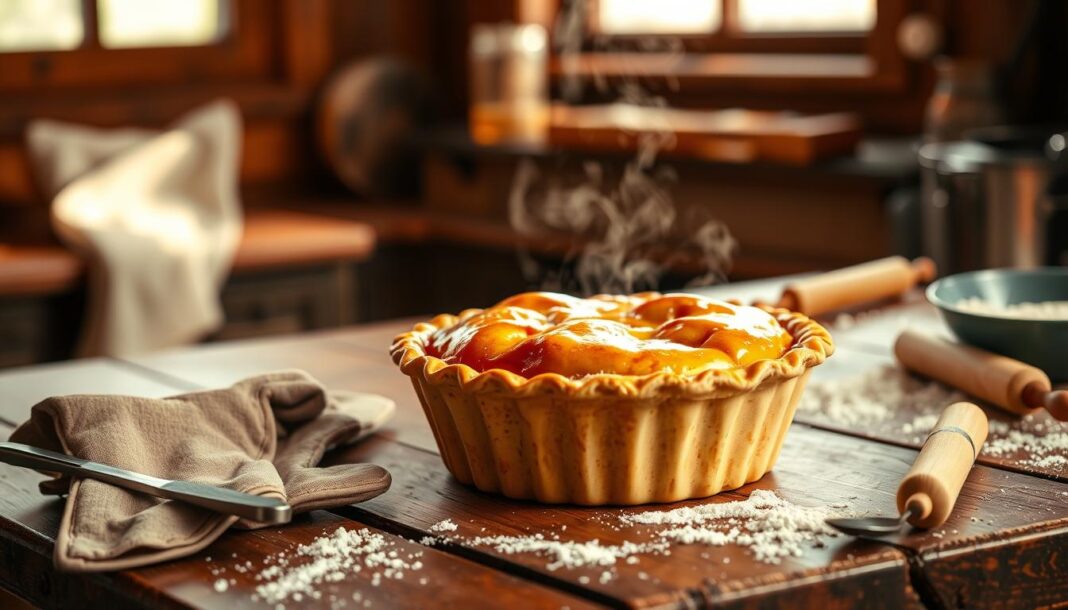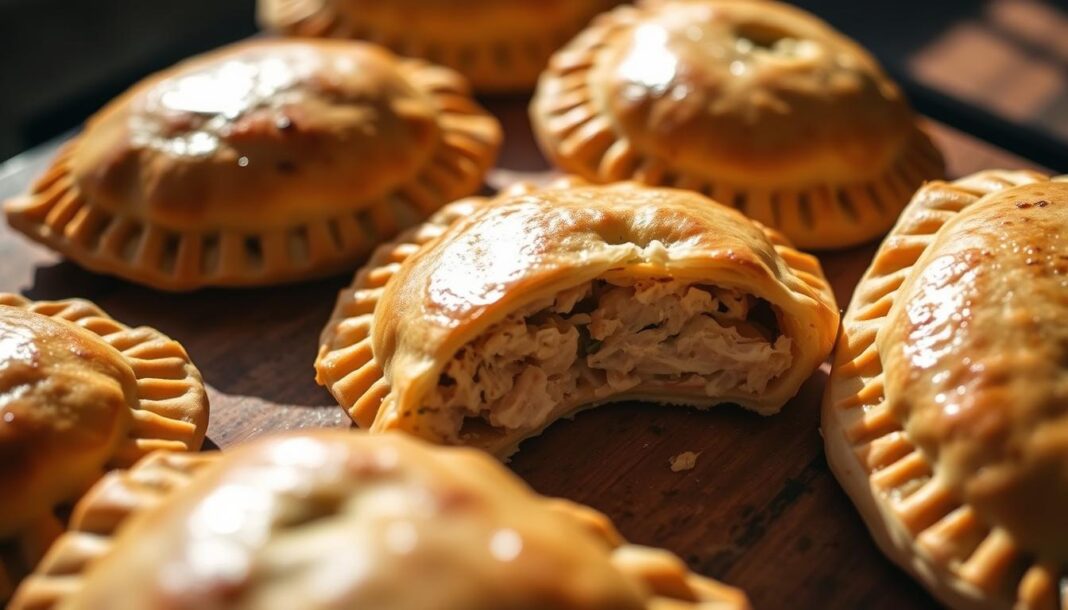We explore the rich world of hot pie food, a comfort food staple that has evolved significantly over time. From traditional savory classics to modern interpretations, pies have become a celebrated culinary achievement, with each culture adding its unique twist.
Understanding the fundamental components of a great pie is essential – the perfect balance between crust and filling creates that memorable eating experience we all crave. Our comprehensive guide will take you through essential techniques, time-tested recipes, and professional tips to elevate your cooking skills.
Whether you’re a novice baker or experienced cook, mastering pie making opens up endless possibilities for delicious meals that satisfy both everyday cravings and special occasions.
The Art of Hot Pie Food: A Culinary Tradition
The art of crafting hot pie food is a culinary tradition that spans centuries and continents. We explore the elements that make hot pies a staple in many cuisines, from their historical significance to their modern-day appeal.
What Makes a Perfect Hot Pie
A perfect hot pie represents a harmonious balance of textures and flavors – a golden, flaky exterior that gives way to a moist, flavorful filling that delivers immediate satisfaction. The temperature contrast is crucial to pie perfection, with the exterior providing structure while the interior remains hot and succulent. This balance creates a comforting eating experience that is both satisfying and enjoyable.
Historically, pies served as practical, portable food for workers, evolving over time into diverse regional specialties that reflect local ingredients and cultural preferences.
The Cultural Significance of Pies Across America
Across America, distinctive pie traditions have emerged – from New England’s savory seafood pies to the hearty meat pie of the Midwest and the unique flavors of Southern cuisine. The communal nature of pie-making and consumption has cemented these dishes as centerpieces of American food culture, bringing people together around the table for generations, creating lasting family memories and traditions that stand the test of time, and allowing us to savor the rich taste of heritage.
| Region | Pie Tradition | Common Ingredients |
|---|---|---|
| New England | Savory Seafood Pies | Fish, Shellfish, Vegetables |
| Midwest | Hearty Meat Pies | Beef, Pork, Potatoes |
| Southern | Unique Flavors | Chicken, Sweet Potatoes, Spices |
“Cooks and their knaves cried ‘Pies, hot pies! Good pork and good goose! Come, dine! Come, dine!'”
As we can see, the art of hot pie food is not just about the ingredients or the cooking method; it’s about the cultural significance and the family traditions that come with it.
Essential Techniques for Creating Delicious Hot Pie Food
The art of crafting hot pie food involves more than just filling a crust with ingredients. It requires a deep understanding of the techniques that elevate a simple pie into a culinary masterpiece.
Mastering the Perfect Pastry Crust
A perfect pastry crust is the foundation of any great pie. To achieve this, we use a combination of cold butter and precise handling techniques. The ratio of fat to flour, the temperature of ingredients, and the handling method all significantly impact the final texture of the pastry. For instance, using cold butter creates steam pockets during baking, resulting in flaky layers.
We employed one of Eulalia Piebakere’s redactions for a boiling fat pastry, which is based on Savouring the Past’s recipe for a Standing Paste Pie Crust. To make this pastry, we heat butter, lard, and water in a saucepan until it’s about to boil, then mix it with flour and a pinch of salt until it forms a smooth dough.

Filling Preparation and Flavor Combinations
Preparing the filling is just as crucial as making the pastry crust. We consider both flavor development and moisture control when selecting ingredients. Pre-cooking certain ingredients can intensify flavors while preventing a soggy bottom crust. Understanding the science behind thickening agents for fillings is also crucial to prevent the filling from running across the plate when the pie is cut.
For more inspiration on unique fillings, you can explore recipes like the jelly tart, which offers a sweet contrast to savory pies.
Baking vs. Frying: Different Cooking Methods
The method of cooking can dramatically change the outcome of your pie. Cooking in an oven produces even browning and allows for decorative lid designs, while frying creates a crisp exterior with faster cooking times. Temperature management is crucial throughout the cooking process to prevent soggy results.
| Cooking Method | Result | Advantages |
|---|---|---|
| Oven Baking | Even browning, decorative lid | Allows for complex designs, consistent results |
| Frying | Crispy exterior, fast cooking | Unique texture, quick results |
By mastering these techniques and understanding the nuances of different cooking methods, you can create delicious hot pie food that impresses. Whether you’re baking in an oven or frying, the key to success lies in the details.
Classic Hot Pie Food Recipes to Try at Home
In this section, we’ll share four beloved hot pie recipes that are sure to become family favorites. These dishes represent a mix of traditional comfort food and international flavors, all united by the warmth and comfort of a perfectly baked pie.
Traditional Steak and Ale Pie
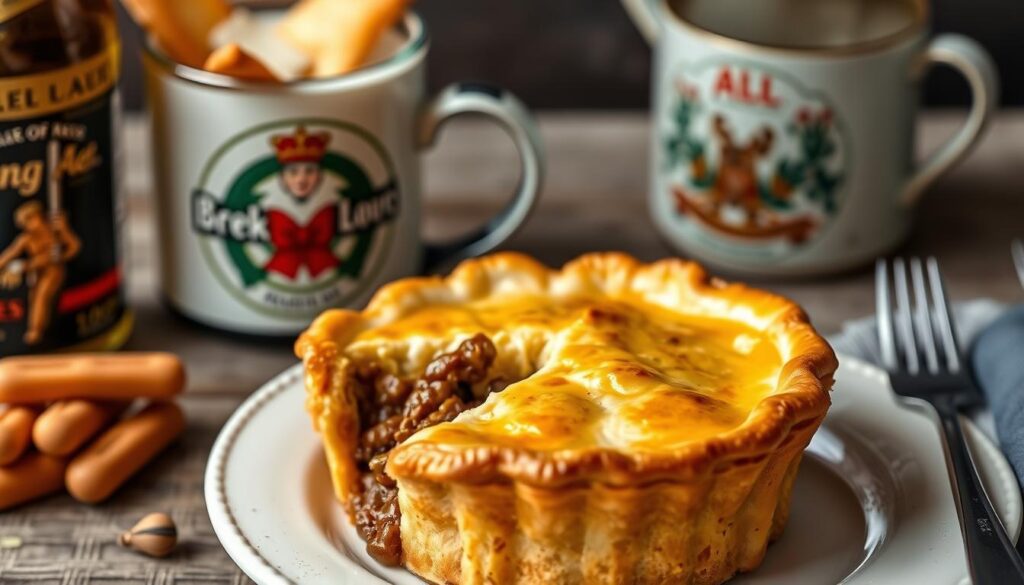
The classic steak & ale pie is a thing of beauty, with tender chunks of beef slowly simmered in rich ale until meltingly tender, creating a deeply savory sauce beneath a golden pastry lid. The key to an exceptional steak pie lies in proper browning of the meat before braising, developing complex flavor compounds that form the foundation of the dish.
Chicken, Kale & Mushroom Pot Pie
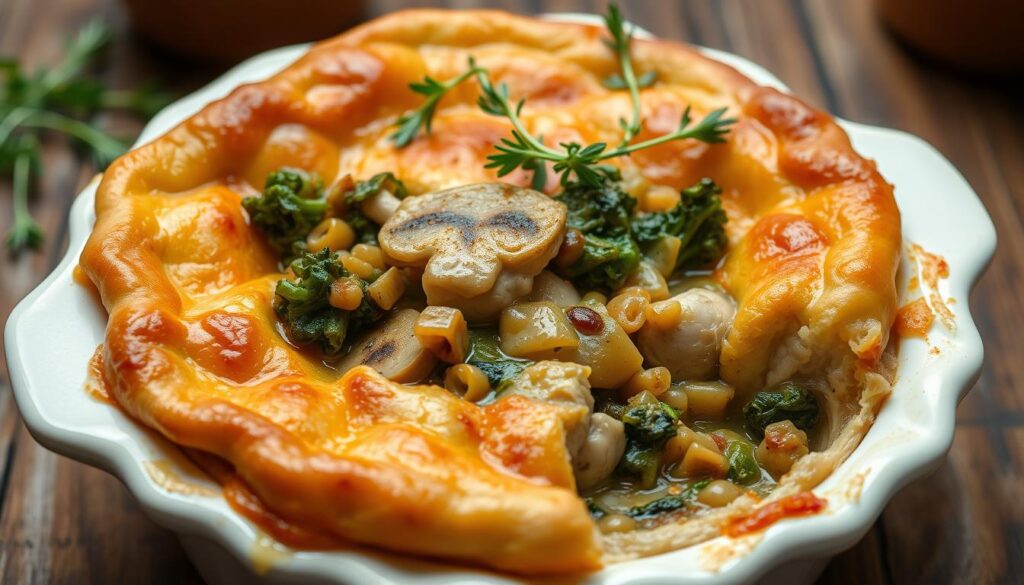
Our chicken, kale & mushroom pot pie offers a lighter yet equally satisfying alternative, combining lean protein with nutritious greens and umami-rich mushrooms in a silky sauce. For the perfect pot pie, we recommend using bone-in chicken pieces for enhanced flavor, removing the meat after cooking, and incorporating it back into the thickened sauce before baking.
Classic Cottage Pie with Cheesy Mash
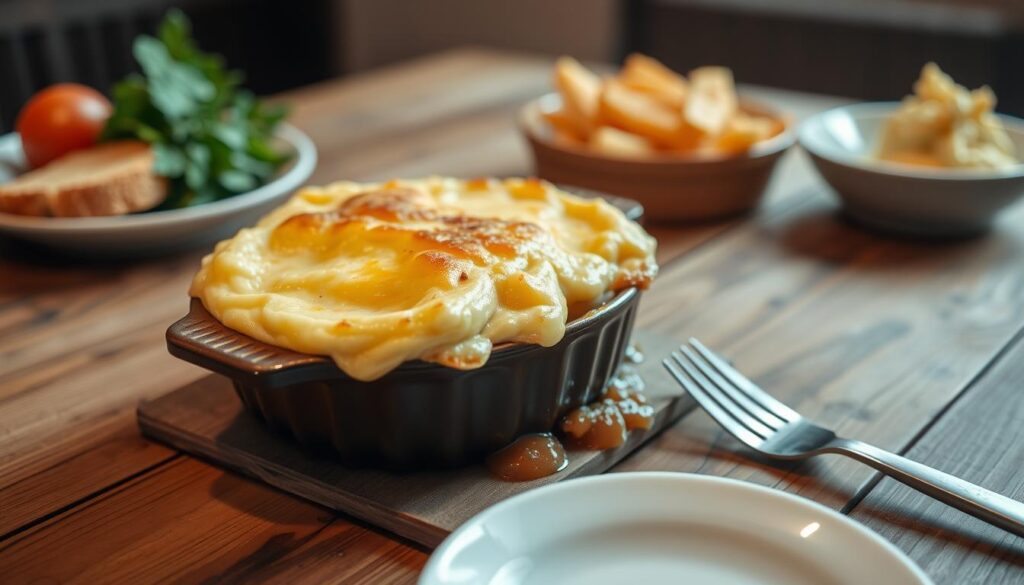
A rich cottage pie is the perfect antidote to a dark, stormy night. Top the mash with strong grated cheddar and a sprinkling of freshly grated nutmeg for added flavor. The secret to an exceptional cottage pie lies in developing a rich, reduced sauce through proper browning and deglazing techniques, creating concentrated flavor that stands up to the substantial potato topping.
Jamaican-Style Spicy Beef Patties
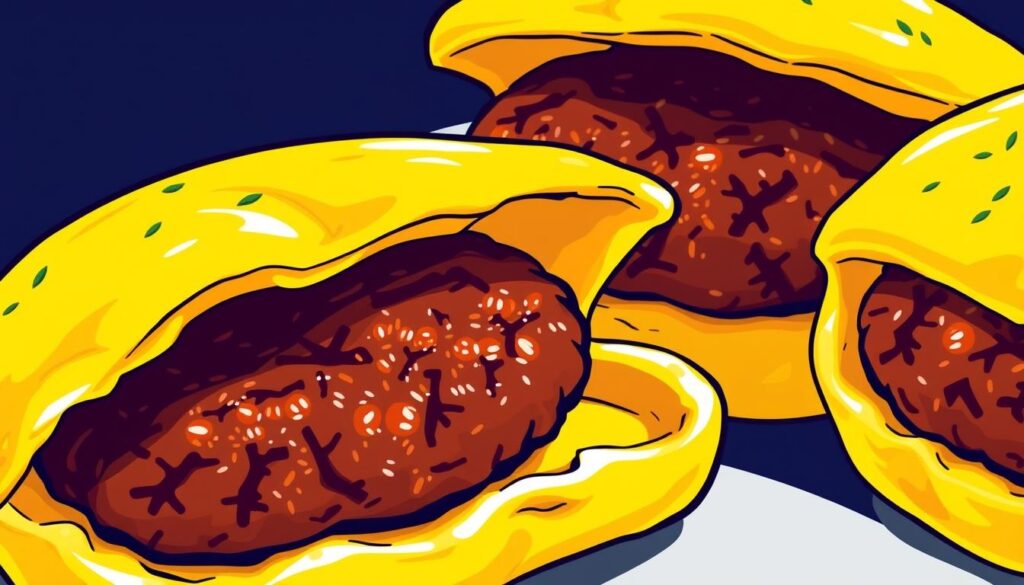
Jamaican-style beef patties introduce international flair with their distinctive yellow pastry and boldly spiced filling, offering a hand-held pie experience perfect for meals on the go. The characteristic yellow color comes from turmeric or annatto in the pastry, while the filling balances heat from Scotch bonnet peppers with warming spices like allspice and thyme.
These recipes showcase the versatility and comfort of hot pies, whether you’re in the mood for a traditional British dish or something with a bit more international flair. Each recipe offers a unique flavor profile and texture, ensuring there’s something for everyone to enjoy.
Taking Your Pie-Making Skills to the Next Level
Elevating your pie-making skills requires a combination of technique, creativity, and practice. To become a proficient pie maker, it’s essential to master advancedpastry techniquessuch as lamination, which creates exceptionally flaky layers through repeated folding ofbutterinto dough.
Experimenting with alternativepastry typesexpands your repertoire, frompuff pastryfor elegant presentation to hot water crust for robust, portable pies perfect forfamilyoutings. Developing signature fillings that balance multiple flavor dimensions creates memorablepiesthat become requestedfamilyfavorites.
Properovenmanagement is crucial, using baking stones, steam injection, or convection settings strategically enhances crust development. For inspiration, we can look at historicalpie recipesand international pie traditions, which offer unique flavor profiles and techniques. By understanding the science of thickeners and mastering the timing of component preparation, you can create deliciouspieswith perfectsauceconsistency everytime.
With practice and patience, you’ll be able to create show-stoppingpiesthat are sure to impress. Whether you’re making a classicsteakpie or experimenting with newrecipes, the key to success lies in mastering the fundamentals and being willing to innovate.
